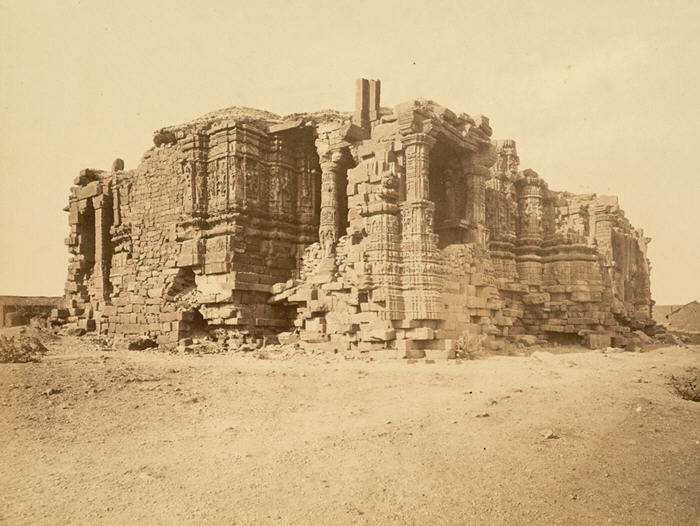
The city of Somnath lies on the west coast of India, near veraval in Saurashtra in the state of Gujarat. The area was formerly called Prabhasa, and it was here that Lord Krishna arranged for the members of His dynasty to leave this world, on the pretext of killing one another in a great battle.

The main temple at Somnath is that of Lord Siva as Somesvara, “the lord of Soma, the moon-god.” (Somnath, from soma-natha, means the same thing). Shri Somnath is first among the twelve Aadi Jyotirlings of India. It has a strategic location on the western coast of India.
It is the most sacred of the twelve Jyotirlingas (lingas of light) phallic symbol of the Lord Shiva. The Somnath Temple is known as ‘the Shrine Eternal’, as although the temple has been destroyed six times it has been rebuilt every single time.
As is common in Siva temples, the deity is a Siva-linga, a phallic representation of Siva as the original progenitor. According to the Siva Purana and Nandi Upa-Purana, Lord Siva is especially present on earth in twelve places. The Siva-lingas in these places are known as Jyotir-lingas (“lingas of light“), and the foremost of these is Somesvara at Somnath.

To see Somesvara, one has to pass through two impressive pillared halls. The Jyotir-linga looked like any other Siva-lingas , but the priest tells that a person who has attained a certain degree of spirituality sees the Jyotir-linga as a column of fire piercing through the earth. Many people visit the temple, most of them to perform the sraddha ceremony for the sake of their ancestors.
Timing for Darshan at Somnath Temple : 6.00am to 9.00pm
Timing for Aarti : 7.00 am, 12.00 Noon and 7.00 pm
“Jay Somnath” Sound and Light Show : 8.00 pm to 9.00 pm
Outside, from the back of the temple one can have a beautiful view of the ocean and the beach. Local people sell conch shells and small sculptures of deities, and pilgrims enjoy riding on horses and camels.
Regarding history of the Somnath temple’s repeated destruction, locals compare the temple to be mythical phoenix, a bird that burns up but leaves behind an egg so that another phoenix can rise. Similarly this temple, with the deity whose shape is like that of an egg, has risen eight times after being plundered and reduced to ruins between A.D. 1300 and A.D. 1707.
While excavating for the present temple, workers found the remains of many former temples. Unearthed sculptures, artistic pillars, ceilings, and inscriptions are displayed in the Prabhas Patan museum in town. The original temple is said to have been built in four phases. Soma, the moon-god, built it out of gold; Ravana, the demoniac king of Lanka, rebuilt it out of silver; with sandalwood by Lord Krishna, and with stone by Bhimdeva (Solanki Ruler of Gujarat; Solanki was one of the 5 Rajput kingdoms in India).
References to Prabhasa can be found in the Rig Veda and in several Puranas. The Srimad-Bhagavatam (Bhagavata Purana) mentions that Lord Balarama came here twice, once when He went on pilgrimage to avoid taking sides in the Battle of Kurukshetra, and again, on the request of sages, after He killed the disrespectful Romaharsana Suta.
